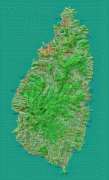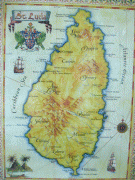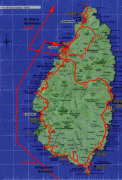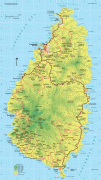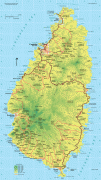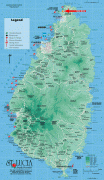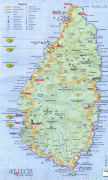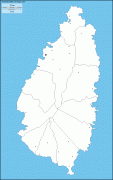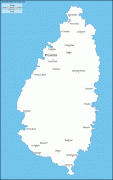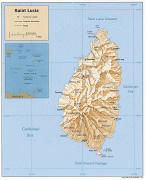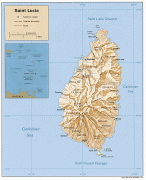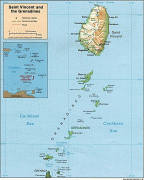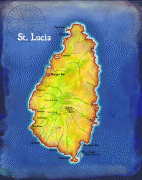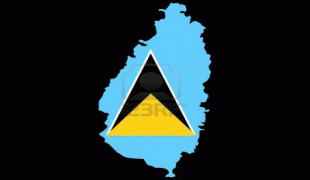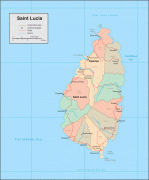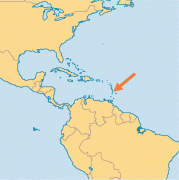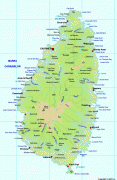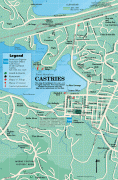Saint Lucia (Saint Lucia)
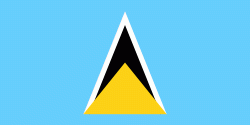 |
 |
| Flag of Saint Lucia | |
The first proven inhabitants of the island, the Arawaks, are believed to have first settled in AD 200–400. Around 800 AD, the island would be taken over by the Kalinago. The French were the first Europeans to settle on the island, and they signed a treaty with the native Caribs in 1660. England took control of the island in 1663. In ensuing years, England and France fought 14 times for control of the island, and the rule of the island changed frequently. Eventually, the British took full control in 1814. Because the island switched so often between British and French control, Saint Lucia was also known as the "Helen of the West" after the Greek mythological character, Helen of Troy.
Representative government was introduced in 1924 with universal suffrage being established in 1951. From 1958 to 1962, the island was a member of the West Indies Federation. On 22 February 1979, Saint Lucia became an independent state, while remaining as a Commonwealth Realm.
Saint Lucia is a member of the United Nations, the Organisation of American States, the World Trade Organization, CARICOM and the Organisation of Eastern Caribbean States (OECS). It is also a member of Organisation internationale de la Francophonie.
Saint Lucia was named after Saint Lucy of Syracuse (AD 283 – 304). Saint Lucia and Ireland are the only two sovereign states in the world named after a woman (Ireland is named after the Celtic goddess of fertility Eire) and Saint Lucia is the only one named after a human woman. Legend states that French sailors were shipwrecked on the island on 13 December, the feast day of St. Lucy, and therefore named the island in her honour. A globe in the Vatican from 1520 shows the island as Sancta Lucia, indicating that the island was instead named by early Spanish explorers.
Currency / Language
| ISO | Currency | Symbol | Significant figures |
|---|---|---|---|
| XCD | East Caribbean dollar | $ | 2 |
| ISO | Language |
|---|---|
| EN | English language |






